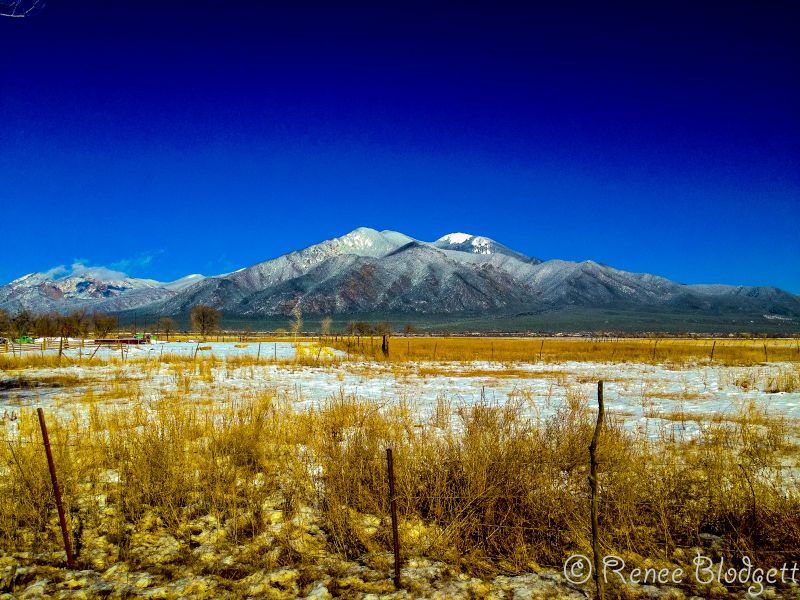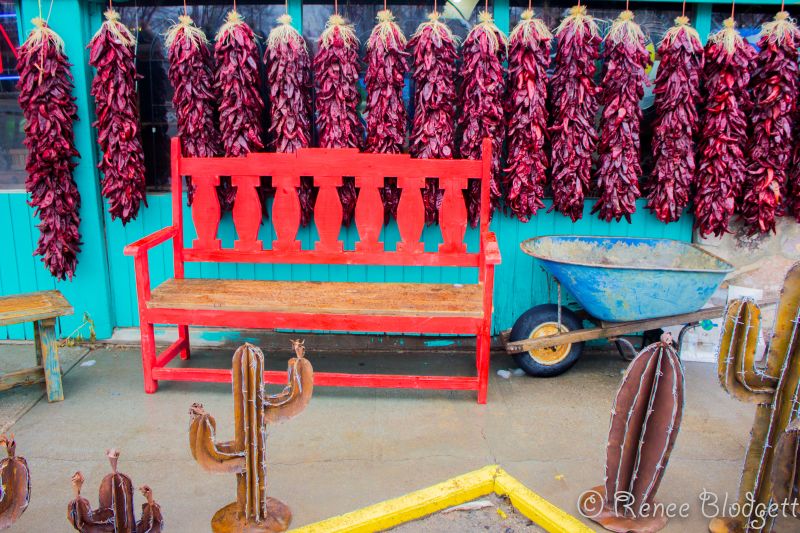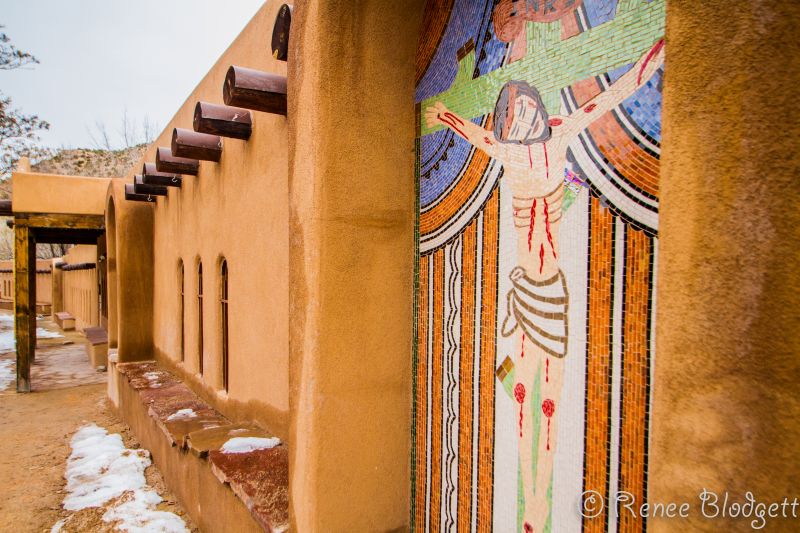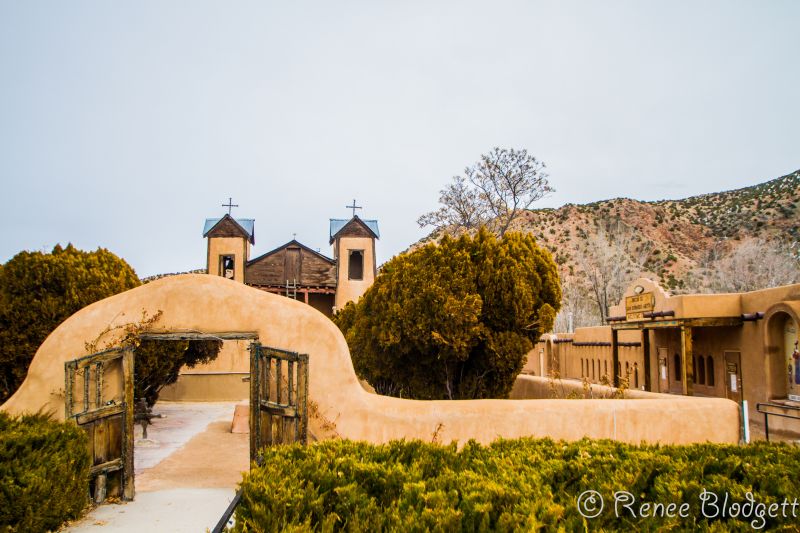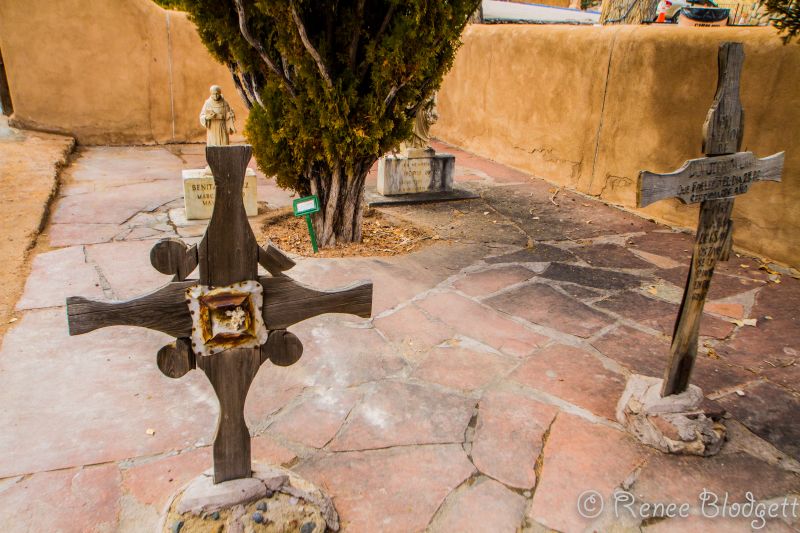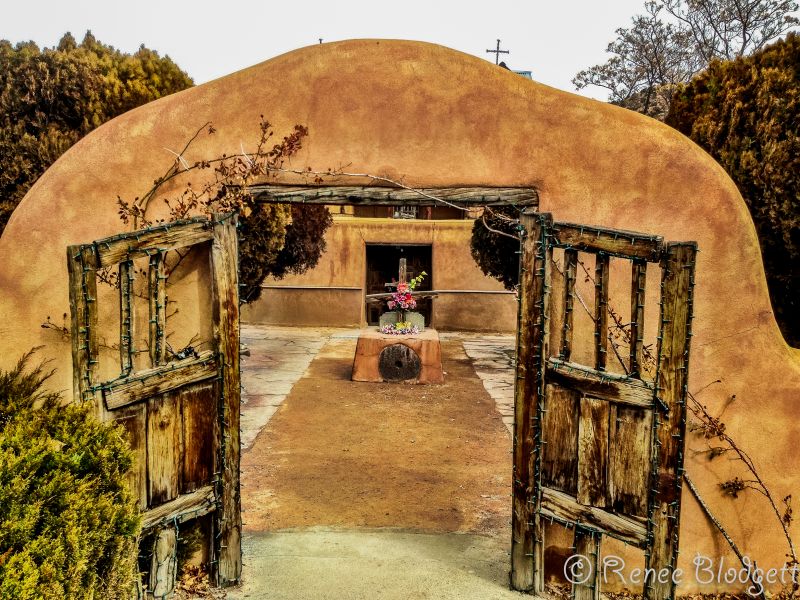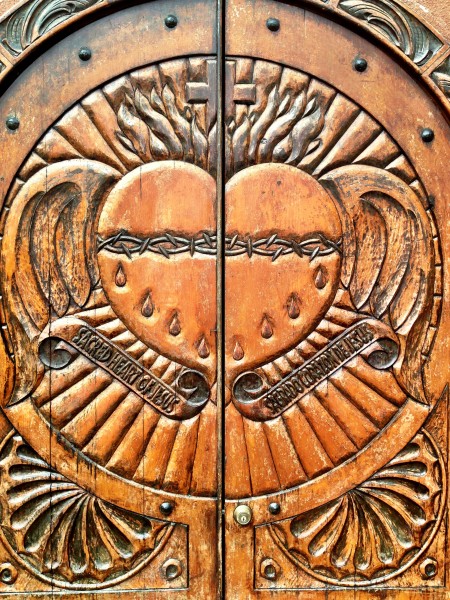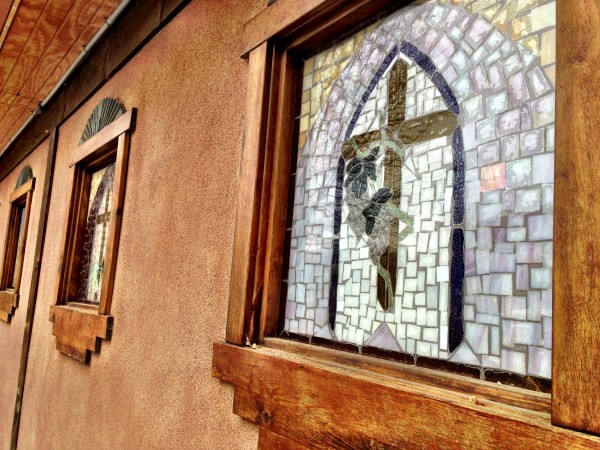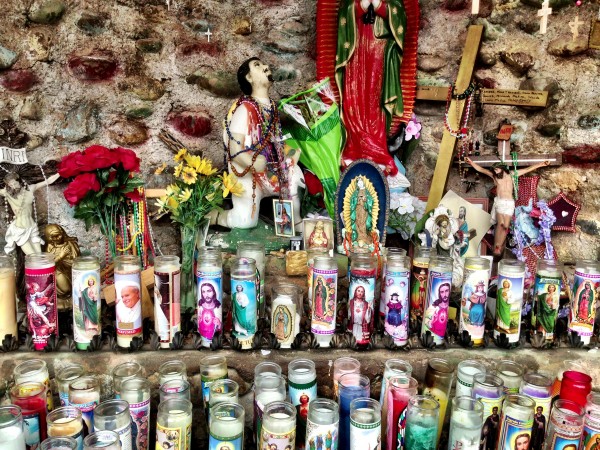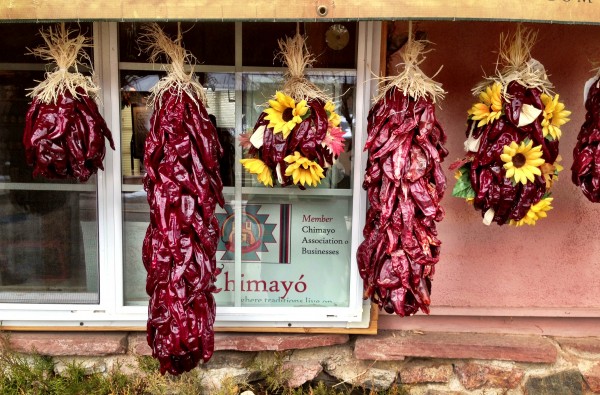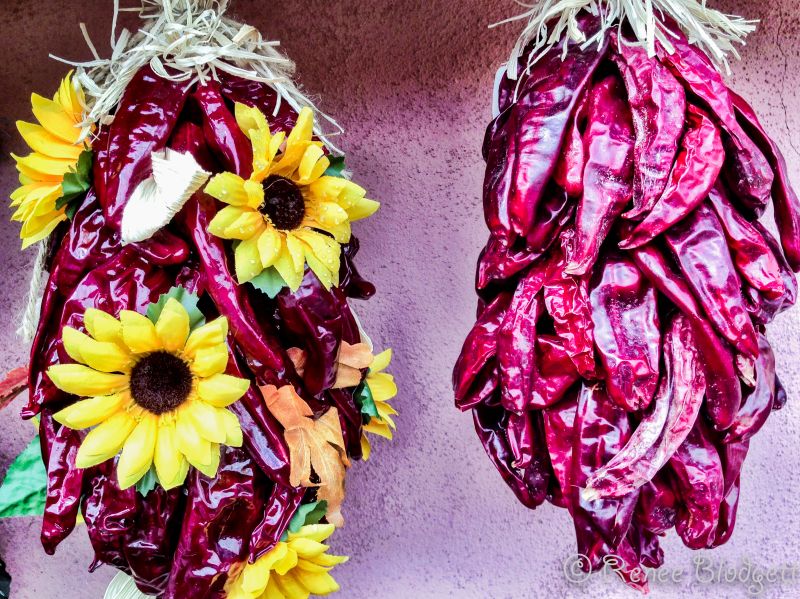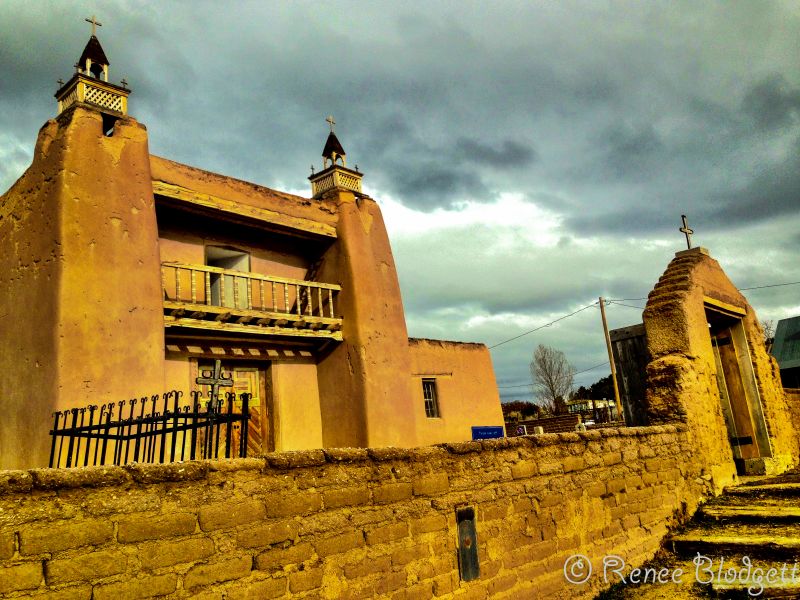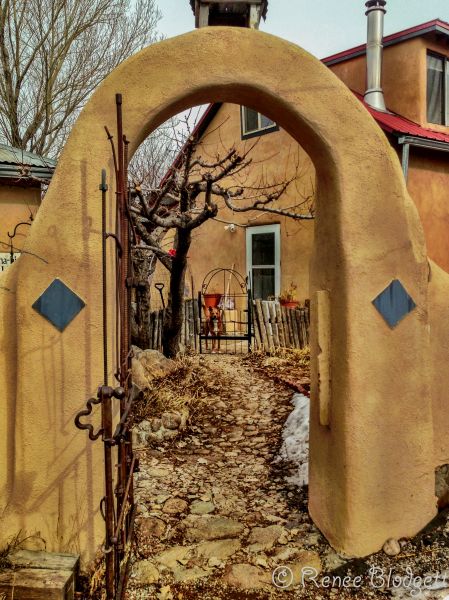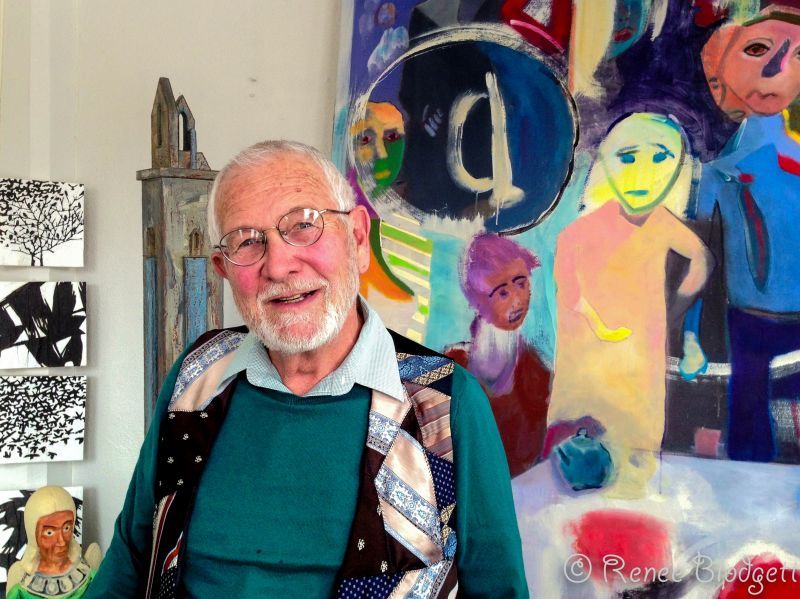Sure, Taos New Mexico is a stunning oasis, surrounded by mountains on all sides. The views. the skiing, the nature and hikes, the mountain landscapes, the colors….all of it!! There’s also a spiritual sense about the place and many artists flock to the area to paint, sculpt, write or create. I wrote about Taos Pueblo, Taos & Taos Ski Valley as well as great foodie picks for the area, however what I haven’t explored is the drive we took from the town of Taos to Taos Ski Valley, going north on something locals refer to as the High Road.
After being in Taos for a few days, people kept asking us whether we had taken the High Road yet, so after a little digging, we realized it was a beautiful way to get to Taos Ski Valley, opting to take the Low Road back, since we were planning a stop over at the Ojo Caliente Mineral Springs Resort & Spa, which was on the way.
The 56-mile High Road to Taos is a scenic, winding road through the Sangre de Cristo Mountains between Santa Fe and Taos. Just before leaving Taos and making our way north, a side road that led to our B&B greeted us with a breathtaking view that sunny clear morning.
On our way out of town, we stopped at a fabulous Mexican furniture store called Casa del Sol.
The High Road to Taos Scenic Byway takes the traveler through an authentic remnant of “Old Spain” along Route 285/84 north from Santa Fe and thereafter east on N.M.503 to the Pueblo of Nambe. Occupied since about 1300, this Tewa pueblo was first described by Castano de Sosa in 1591 as a square structure, two stories high with a central plaza.
The byway turns north on N.M. 520, traveling through Chimayo, a community known for its fine Spanish weaving and crafts and church. The Santuario de Chimayo is especially known for El Posito, a hole in the floor of a side chapel filled with healing earth. Pilgrims come here to take a bit of the earth and pray for healing. The Holy Dirt here can be taken away and they give you six guiding principles for how to use the dirt, which should finish with a prayer that says “Glory be to the Father and to the Son and to the Holy Spirit. Amen.”
Catholicism is prevalent throughout New Mexico of course and the land feels spiritual throughout the state. The El Santuario de Chimayó church and shrine, which is a National Historic Landmark, is famous for the story of its founding and as a contemporary pilgrimage site. It receives almost 300,000 visitors per year and has been called “no doubt the most important Catholic pilgrimage center in the United States.”
The walls of an adjoining chapel are covered with religious paintings and statues, crosses, rosaries, and crutches left by those who have been healed. At Easter every year, the road to Chimayo is filled with people who have walked many miles in their various journeys. The village was founded in the early eighteenth century around a defensible plaza and its and still retains that same pattern.
There’s also a restaurant at Chimayo where you can get bites to eat like green and red chile tamales, but also gifts to go, such as Jalapeno or Red Chile Strawberry preserves, or how about the Habanero Peach or Red Chile Mango Preserves? These are for folks who can handle the heat and for those who like their chilies piping hot, they sell green chile powder and crushed.
You can also get pistachios, coffee, chile pods, corn husks and blue corn meal, as well as beautifully decorated Chile Strings in various sizes, as well as decorated as a wreath.
You’ll continue north from here on N.M. 76, climbing northeast through the creased and crinkled badlands, polka-dotted with scrubby pinon and juniper, with the Jemez Mountains enormous on the horizon. An interesting detour takes you through Cordova, a village known for its traditional wood carvers.
It’s windy for a chunk of this road, but the views are nothing short of awe-inspiring.
We came across this little pooch on the side of the road, sitting there without a care in the world, and no adult insight.
At a place called Truchas, the byway makes a turn further north, but it’s worth driving a tad further east and heading into the small village. The road through the village runs alongside a deep canyon where buildings may seem to be precariously placed on its rim.. To the west, Truchas Peaks rises 5,600 feet above the village.
Further north from here still on Route 76, you’ll reach the village of Las Trampas, a wide expanse of valley opens out into even more panoramic beauty, Truchas Peaks still on your east. Over 13,000 feet in elevation, the Peaks are among the highest in the New Mexico Rockies. Settled in 1751, the village of Las Trampas has one of the finest surviving eighteenth-century churches in New Mexico, San Jose de Gracia, built in 1760 and apparently all of the church’s original paintings have survived.
At the junction of 76 and 75 is Picuris Pueblo, a half mile to the north; the church dates from the 1770s. It is unadorned adobe, except for small plants growing on top of the buttresses and a pueblo ladder leaning against a wall.
Along the way nearby one of the small villages, we were lost so stopped at a little adobe house with an archway to ask for directions. Inside, we discovered an art gallery which the elderly gentleman had been running for years.
Later not far from here, we met another retired man who also turned part of his home into an art gallery. Before we left, we took in the art from an exhibition he was running and chatted with him, listening to story after story about the region, the local art scene and recommendations about where else to go in and around Taos.
Further along, you’ll reach an overlook area where you get a glimpse of Placita and the valley that shelters it and down the hill, there’s a fabulous view of the Carson Forest with the stunning Taos Mountains in the background. The villages of Talpa and Ranchos de Taos follow, as well as an old Spanish cemetery (campo santo, or holy field).
You can also visit the San Francisco de Asis Church which was made famous by the countless photos artists and photographers have tried to capture. The interior is austere in its simplicity and whitewashed walls contrast with dark-stained vigas and the Christmas colors of the reredos behind the altar. Instead of stained glass, two plain glass windows illuminate it from either side. The church shares the plaza with private homes and Andy’s La Fiesta saloon.
The High Road is well worth taking, but word of advice — take your time. Allow yourself to stop in the villages, breathe in the culture and the natural beauty around you. Allow yourself to reflect on the spiritual abundance from both the earth and the numerous churches and chapels you’ll visit along the way.
Talk to locals and ask tons of questions about the history of the area, why they’re there, the art scene and beyond. Bring a camera and snap away as you won’t have a shortage of stunning views in both directions. It might just make you fall in love with New Mexico — it did for us!

Renee Blodgett is the founder of We Blog the World. The site combines the magic of an online culture and travel magazine with a global blog network and has contributors from every continent in the world. Having lived in 10 countries and explored nearly 80, she is an avid traveler, and a lover, observer and participant in cultural diversity.
She is also the CEO and founder of Magic Sauce Media, a new media services consultancy focused on viral marketing, social media, branding, events and PR. For over 20 years, she has helped companies from 12 countries get traction in the market. Known for her global and organic approach to product and corporate launches, Renee practices what she pitches and as an active user of social media, she helps clients navigate digital waters from around the world. Renee has been blogging for over 16 years and regularly writes on her personal blog Down the Avenue, Huffington Post, BlogHer, We Blog the World and other sites. She was ranked #12 Social Media Influencer by Forbes Magazine and is listed as a new media influencer and game changer on various sites and books on the new media revolution. In 2013, she was listed as the 6th most influential woman in social media by Forbes Magazine on a Top 20 List.
Her passion for art, storytelling and photography led to the launch of Magic Sauce Photography, which is a visual extension of her writing, the result of which has led to producing six photo books: Galapagos Islands, London, South Africa, Rome, Urbanization and Ecuador.
Renee is also the co-founder of Traveling Geeks, an initiative that brings entrepreneurs, thought leaders, bloggers, creators, curators and influencers to other countries to share and learn from peers, governments, corporations, and the general public in order to educate, share, evaluate, and promote innovative technologies.

